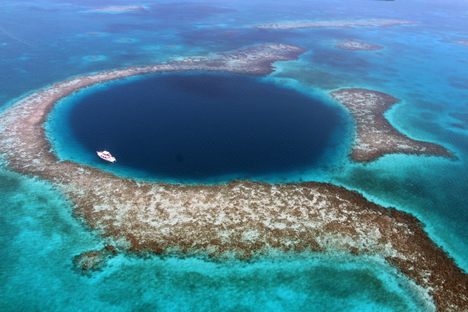AO Edited
The Crystal Maiden of the Actun Tunichil Muknal Cave
Sparkling, calcite-covered skeletons of children who may have been sacrificed to appease an angry god.
Uncovered in 1989, this jungle cave in the Tapir Mountain Nature Reserve is accessible via an hour’s ride from San Ignacio, Belize, and a walk for another hour across shallow rivers and through jungle. Here one arrives at the Actun Tunichil Muknal or “ATM” cave mouth. To gain access to the cave, one must swim in and then wade up the cave river for another kilometer.
Walking a further kilometer and a half in the cave, past huge boulders and cavernous rooms (one known as “The Cathedral”), to the back of the cave system, you find the skeletons of the ritual sacrifices made by the Maya to their gods more than a thousand years ago.
The skeletons range in age from one year old to adult. Four of those sacrificed are infants between the ages of one and three, some stuffed into crevices and small adjoining caves. There is one child of seven, a teenager of 15 (who appears to have been bound before being killed), a 20-year-old, and numerous adults between the ages of 30 and 45. Many of the younger skeletons show signs of cranial deformation or “skull shaping,” giving their heads a slightly elongated alien look.
Almost all were killed by blunt trauma to the head—some had their entire skulls crushed. While the precise dating of the skeletons is difficult (due to their being essentially cemented to the cave floor by calcite) most of the pottery found at the site dates from between 700 and 900 AD, which is likely when the bodies found here were sacrificed.
Farther into the cave is perhaps the most famous of these long-dead Maya: the skeleton of a 17-year-old boy best known as the “The Crystal Maiden.” Though the owner of the skeleton was initially believed to be a female (due to its small size and slight frame), closer examination of the bones has revealed features that suggest they were male. (Some tour guides allegedly refer to it as “The Crystal Prince.”)
The skeleton is unique in its positioning and the fact that two vertebrae are crushed. Researchers believe this person may have died in a particularly violent manner before being thrown or tossed onto the ground, where their body has lain for at least the last 1,100 years. The skeleton has been there so long, in fact, that it has completely calcified, giving the bones a sparkling, slightly plump look that inspired the crystalline nickname.
It is unknown what the circumstances of the sacrifices were, though some believe they were to appease the rain god Chac, or possibly the gods of the underworld. Another theory holds that these were believed to be witches (possibly suffering from some kind of mental or physical ailments) and that leaving them unburied in the cave would ensure that their spirits were trapped there.
Other items found in the cave include ceramics, marked with “kill holes,” and cave formations carved by the Maya, such as silhouettes of faces and animals. The cave is also home to Amblypygi or “whip spiders” and other predatory spiders.
Due to the inaccessibility and the calcification process of the cave, many of the relics have been preserved just as they were left and very little has been removed from the cave since it was discovered. (Some things were looted early on.)
The name Actun Tunichil Muknal translates as “Cave of the Crystal Sepulchre,” and the locals know it as “Xibalba” after the Mayan underworld. The Crystal Cave was traditionally believed to be an entrance to hell, a deep fissure in the earth filled with rivers of blood and scorpions. This was the domain of the Mayan death gods, the subterranean court of the Lords of Xibalba. Often referred to as demons, these 12 deities had names like “Stabbing Demon” and “Skull Staff,” and inflicted a range of maladies on people including sickness, pain, and fear.
ATM cave is one of the few protected places in Belize, with only a few guides authorized to lead tours. Be very careful, however, as none of the skeletons or pottery are roped off, and one tourist has already dropped a camera accidentally on and broken one of the skulls.
Know Before You Go
The ideal way to experience ATM is by hiring a private guide to take you at 7am before larger groups arrive. That way the journey is completely quiet and allows for one to grasp the depth of the cave, as well as the size of the grand chamber itself. You will also need socks (some of the cave is protected, and shoes are not allowed). Note: a licensed guide is required and arrangements must be made in advance. No photography, cell phones, cameras, food, or backpacks are allowed inside the cave so that they don't damage the artifacts.



























Follow us on Twitter to get the latest on the world's hidden wonders.
Like us on Facebook to get the latest on the world's hidden wonders.
Follow us on Twitter Like us on Facebook